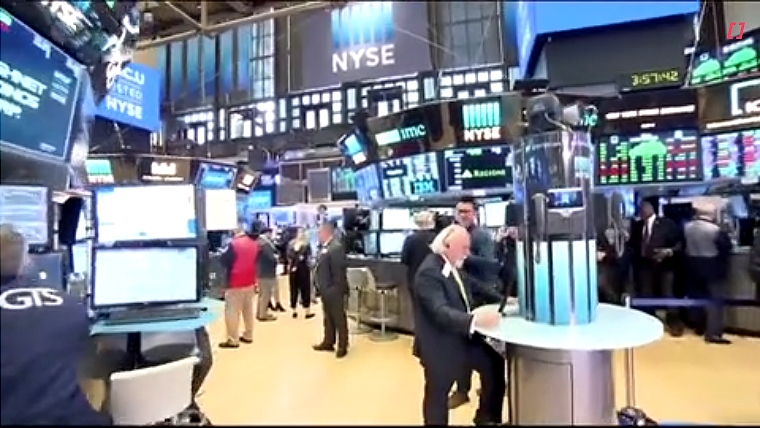
A hot US PPI print dampened the mood in the market, driving up US rates, but US equities recovered most of their fall. Higher rates drove broad gains in the USD and the NZD has underperformed, down 1% overnight and lower on key crosses.
The US PPI rose 0.9% m/m in July, the fastest pace in over three years, with the core measure (ex-food and energy) rising by the same amount, and both measures much higher than the 0.2% expected by the market. This saw annual inflation in the core measure jump from 2.6% to 3.7% y/y. The data were consistent with higher tariffs driving higher inflation amongst businesses, even if that has yet to be felt by consumers, with the figures contrasting with the more muted CPI figures published earlier this week. Pantheon Macroeconomics estimates that combining CPI and PPI, the core PCE deflator – the Fed’s preferred inflation target – will show a 0.26% gain for the month, lifting the annual increase up from 2.8% to 2.9%, further away from the 2% target.
While US rates rose after the release, the market still thinks there is a high chance of a rate cut next month, with 23bps priced, although the risk of a jumbo 50bps move was evaporated.
In an interview before the PPI data, San Francisco Fed President Daly said she didn’t see the need for a 50bps cut and reiterated her recent change in view that she would support a 25bps cut next month. St Louis Fed President Musalem did not support a 50bps cut and was still undecided about whether he’d vote for a 25bps cut next month.
The US 2-year Treasury yield is up 6bps for the day to 3.74%, within 3bps of the level preceding the CPI report earlier in the week, while the 10-year rate is up 6bps to 4.29%, back to the pre-CPI level. In other data, US initial jobless claims were in line, at 224k last week, remaining at a level consistent with some ongoing resilience in the labour market.
S&P500 futures fell 0.6% on the PPI report before bouncing back and US equities are now relatively flat for the session.
Higher US rates have supported broad gains in the USD, with dollar indices up 0.4-0.5% for the day. The NZD has been the worst-performing of the majors, down 1% overnight to 0.5915, well down from the 0.5990 level it reached yesterday afternoon. The AUD has also underperformed, down 0.9% to below 0.65. NZD/AUD is softer, heading towards 0.91. Yesterday, Australian labour market data showed modest employment growth and the unemployment rate ticking down to 4.2%, as expected, and the data didn’t move the needle.
JPY got a lift yesterday after US Treasury Secretary Bessent said the BoJ was “behind the curve…so they’re going to be hiking and they need to get their inflation problem under control” – Bessent trying to influence the course of Japanese monetary policy, hot on the heels of his earlier comments that the Fed Funds rate should already be 150-175bps lower. USD/JPY fell from 147.50 to a low around 146.20, but the stronger USD overnight has seen it climb towards 148. NZD/JPY is little changed overnight at 87.5, after making a run towards 87.
NZD/GBP sustained a break below 0.44 following stronger than expected UK Q2 GDP data, rising 0.3% q/q, two tenths higher than expected, and following the solid 0.7% gain in Q1. However, the mix of growth was underwhelming, with strong government spending and inventories offsetting soft private consumption and business investment. NZD/GBP currently sits at 0.4370 while NZD/EUR has fallen to 0.5080.
Bitcoin traded at a record high just over USD124.5k yesterday, but has slumped overnight, not helped by comments by Treasury Secretary Bessent that the US would not be buying additional bitcoin for Trump’s crypto strategic reserve, with a further fall coming after the PPI print. Bitcoin currently trades around USD118k.
There was strong demand for NZGBs at the weekly tender, with close to $1b of bids for the $200m of 4-year bonds on offer and nearly $800b in bids for $250m of 12-year bonds. However, the market weakened into the close and rates ended just 1-2bps lower across the curve, while swap rates were down 1bp, another day of limited net changes in yields. Overnight, there has been more limited price action in Australian bond futures than Treasuries, with the Australian 10-year rate only up about 2-3bps in yield terms.
As the week draws to a close, the market will be paying close attention to the meeting by Trump and Putin in Alaska, Saturday NZ time. Ahead of the meeting, Putin said that the Trump administration was “making quite energetic and sincere efforts to end the conflict and the crisis through agreements that would represent the interest of all sides”.
The economic calendar is full for the day ahead. NZ’s manufacturing PMI and selected monthly CPI indices for July are released this morning, followed closely by Japan Q2 GDP, while China monthly activity indicators are released this afternoon. The key release tonight will be US retail sales.

We welcome your comments below. If you are not already registered, please register to comment.
Remember we welcome robust, respectful and insightful debate. We don't welcome abusive or defamatory comments and will de-register those repeatedly making such comments. Our current comment policy is here.